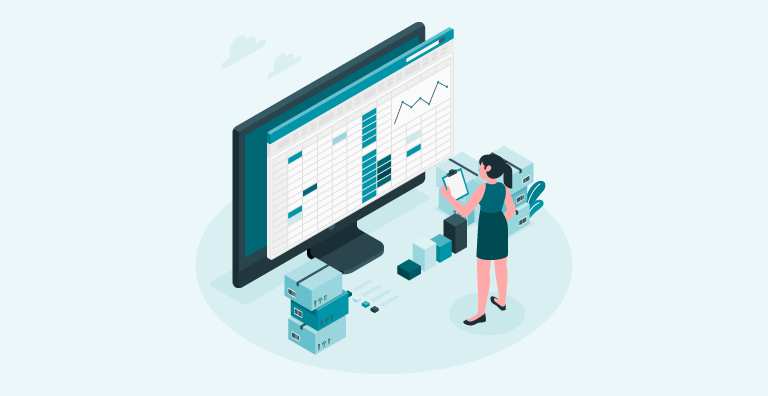When it comes to measuring a retail business’s performance, there are essential reports to monitor, like weekly sales, profit margins, and customer traffic. But your inventory management also provides a reliable gauge for how your business is going and gives you key indicators to help you adapt and pivot quickly when needed.
Are you paying attention to what your inventory is telling you about the health of your retail business?
1. On-hand inventory tells you more than what’s in stock.
Of course, all retailers track how much inventory they have on hand in stores and warehouses. Your in-stock inventory report is one you want your point of sale (POS) system to produce automatically – and you should check it often.
That said, make sure you’re getting everything out of the report that you can. An on-hand inventory report tells you how many items you have in stock, down to the SKU level. It should also calculate the value of your current stock. This tells you, at any point in time, how much capital you have invested in inventory.
As a retailer, you want to sell as much as you can. But in a business where demand can fluctuate dramatically season-to-season and week-to-week, keeping the right amount of inventory on hand without going overboard can be difficult. Money tied up in inventory is unavailable for other business expenses, like rent or payroll, until the items sell. So, getting the not-too-much, not-too-little on-hand inventory balance right is critical for financial plans and forecasting.
Leverage your POS system to determine how many days of supply you need on hand for each item. Then, set automated low stock notifications.
Related: The Secret to Retail Success? 3 Must-Have Inventory Management Capabilities
2. There’s no such thing as a one-size-fits-all inventory turnover rate.
Inventory turnover rates – also known as stock turn – are a key performance indicator (KPI) for retailers. Inventory turnover tells how quickly you are able to purchase and resell your inventory to customers. Knowing your inventory turnover rates is one thing. Understanding – and optimizing – them is another.
The inventory turnover rate tells you the number of times a particular item sells through in a defined time period. An inventory turnover rate is calculated by dividing the cost of the items sold by the average inventory during the time period.
In general, when an inventory turnover rate is higher, it means that while you’re selling a lot of the item, you’re not overstocking it. On the flip side, lower inventory turnover rates could mean you’re holding more stock than you need, which could be tying up capital unnecessarily.
Optimal inventory turnover rates are different for each retailer and the types of products sold. The inventory management capabilities of your POS system offer a wealth of information to help you establish and monitor the inventory turnover rates that work best for your business. As a guideline, for most products, a desirable turnover rate target is between 6 and 12. The target is lower for fashion retailers, typically between 4 and 6, while grocery stores have a higher target around 13 to 14, and luxury retailers selling big-ticket items have lower targets in the 2 to 3 range.
Related: Optimize Your Inventory: Debunking the Myths about Inventory Management
3. Lowering your COGS goes straight to your bottom line.
Cost of Goods Sold (COGS) tells you the costs you’re incurring to acquire or produce the products you’re selling. It’s an essential metric for understanding the operational efficiency of a retail business. Your COGS also helps you compare product lines and determine pricing.
Overall, a low COGS ratio means your costs of purchasing or producing a product are relatively low compared to the sales you make. To calculate the COGS, add the costs of your inventory at the start of a defined time period to the costs of additional stock added during the time period. Then, at the end of the period, subtract the costs of the ending inventory.
- Beginning inventory costs: This is typically the ending inventory amount from the previous period.
- Additional inventory costs: These are the costs of purchasing or producing additional inventory during the defined time period.
- Ending inventory costs: The cost of the inventory on hand at the end of the period.
Reducing COGS directly impacts your bottom line. To lower your COGS, look for smart opportunities to purchase larger quantities at discounted prices or qualify for shipping discounts. And always explore alternate supplier options so that you’re sure you’re paying competitive rates and know the options available if you decide to make a change.

Discover How Inventory Management Can Help
POSIM is a point-of-sale and inventory management system designed for retailers. Along with integrating inventory data across multiple locations, e-commerce, and mobile, POSIM delivers robust reporting and comprehensive point-of-sale capabilities. Discover what’s possible with POSIM. Contact us for a demo today. For more inventory insights, download our guide, Countdown to the Holidays: 10 Steps to Optimize Inventory Management and Increase Sales.











